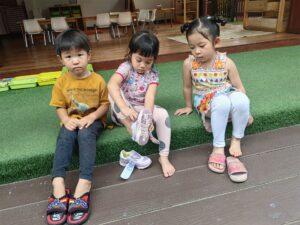By: Teacher Ravisara
When planning holiday activities in the classroom, it’s important to take a thoughtful and inclusive approach that honours diverse backgrounds, traditions, and family beliefs. By teaching students about holidays from various cultures and belief systems, teachers and parents help foster empathy and a deeper understanding of different people and perspectives.
Most holiday celebrations across cultures emphasise traditions, history, and the reasons a community cares for one another. Introducing children to holidays from different cultures helps them recognize that, despite our differences, we share many commonalities, such as:
- Family: Most holiday celebrations are opportunities for extended families to come together, share special meals, and enjoy traditions and each other’s company.
- Respect: Many cultures use holiday celebrations to honour their history and heritage. By explaining these holidays to students, teachers and parents can help their children understand and appreciate the sacrifices made by people in the past.
- Love: Most celebrations feature special foods, fun activities, and a focus on children. Student’s can learn that, regardless of differences in appearance, beliefs, or traditions, all people share a deep love for their children and enjoy spending time together doing enjoyable activities.
Parents can enhance the discussion of holidays with their children by reading multicultural holiday books. A key benefit of sharing these books with your children is the opportunity to explain your own beliefs and traditions while addressing their questions. Even better, if you’re unfamiliar with the holiday, you can learn alongside your child. Here are some great books to begin with:
- Hershel and the Hanukkah Goblins (Eric A. Kimmel) is a creative adaptation of the story of the symbols and traditions of the Jewish holiday which adds an exciting twist while keeping the original spirit of the story.
- My First Kwanzaa (Deborah Chocolate) explains the traditions of the holiday by showing how a family celebrates their African heritage together with food, candles and extended family.
- Christmas Around the World (Mary Lankford) includes illustrations and short descriptions of how 12 different cultures celebrate Christmas differently.
- Bringing in the New Year (Grace Lin) follows the preparations of a Chinese American family as they get ready for the Chinese New Year.
- Diwali, A Cultural Adventure (Sana Sood) introduces the Hindu holiday with rhymes, colourful pictures and simple language.
- Rainbow Magic: Elisha the Eid Fairy (Daisy Meadows) Elisha the Eid Fairy looks after the Muslim festival of Eid, but when naughty Jack Frost steals her magical Eid lantern, everyone’s celebrations go wrong.
Teaching children to appreciate the cultural traditions of others is essential for fostering healthy emotions and social connections. Parents, students, and teachers can nurture cultural sensitivity by explaining holidays to students and helping them understand why people celebrate in different ways.











